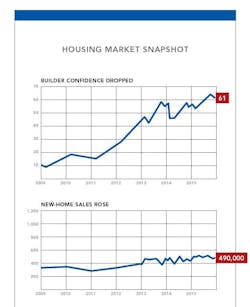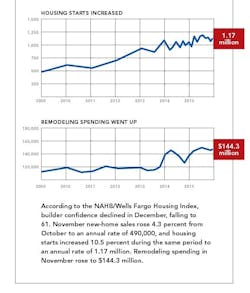Congress Closes 2015 with Housing Tax Provisions
President Obama has signed into law a $622 billion tax package that permanently renews certain housing tax priorities while providing a two-year retroactive renewal for others through the end of tax year 2016.
Congress regularly acts to extend scores of temporary tax provisions known as tax extenders, which are often renewed for just one or two years at a time. This legislation would make many of those temporary provisions permanent.
The National Association of Home Builders pushed for a number of key tax provisions that have now been signed into law, including:
Low Income Housing Tax Credit. The bill permanently sets the credit rate at 9 percent for housing credits used for financing new construction and substantial rehabilitation. When credit rates decline, less equity is available for developments, so keeping a permanent minimum 9 percent floor on federal housing credits is a victory for affordable housing. This will provide all developers with much-needed certainty when planning future projects.
Section 179 Expensing. The tax package permanently extends the small-business expensing limitation and phase-out amounts for Section 179. Current law allows small businesses to immediately write off $25,000 of qualifying property, which is phased out for total investments above $200,000. The bill increases this limit to $500,000 for qualified property with a $2 million phase-out and indexes both for inflation.
Residential Energy Efficiency Tax Credit (25D). This program offers a 30 percent tax credit for the installation of solar panels, wind turbines, geothermal heat pumps, and fuel cells in new or existing homes. The credit is also uncapped, so all qualifying expenses may be claimed. The bill will extend but phase out just the credit for solar starting in 2020, when the credit will fall to 26 percent, dropping to 22 percent in 2021, before expiring in 2022.
Credit for Energy-Efficient New Homes (45L). This provides builders a $2,000 tax credit for exceeding energy standards by 50 percent. The base energy code is the 2006 International Energy Conservation Code plus supplements. The 45L tax credit is extended through 2016 and can be claimed by both for-sale and for-rent homes of three stories or less. Section 45L is expected to save home builders $361 million for tax year 2015.


